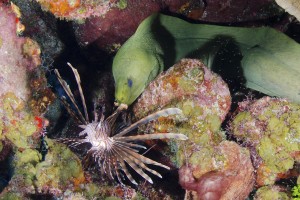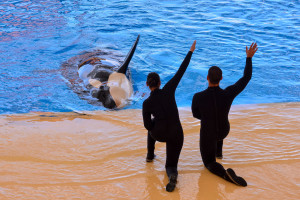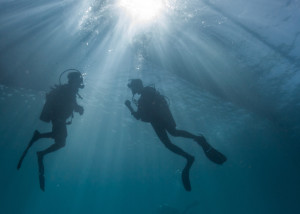
The SnotBot is on a mission to silently hover over whales while collecting their snot for research.
There’s a new drone in town, and it’s nothing to sneeze at. OK — maybe that’s exactly what it is. Dubbed the SnotBot, this data-collecting drone was created by Ocean Alliance and Olin College of Engineering and is designed to catch the spray emitted from whales’ blowholes.
The mucus-rich “blow” provides scientists with a wealth of information, such as hormone levels (which can indicate if an animal is stressed or pregnant), evidence of infections (from bacteria, viruses or even environmental toxins) and tissue samples that can be used for DNA analysis.
Ocean Alliance is running a Kickstarter to fund SnotBot, with a little help from former Star Trek actor Sir Patrick Stewart, who has given his support to the new technology.
“I’m asking you to support my good friend Capt. Iain Kerr at Ocean Alliance in their quest for better, more effective, less invasive, innovative research that will give us answers to some of the mysteries about the ocean and particularly whales,” Stewart says in the video.
Traditionally the “snot” was obtained by leaning over the railing of a boat with a 10-foot pole while chasing down the whales. This approach to data collection is invasive and can put undue stress on the animals, which could influence the information retrieved. The SnotBot is designed to study these marine mammals without disturbing them.
“Imagine if everything your doctor knew about your health came from chasing you around a room with a large needle while blowing an air horn,” the SnotBot team says on its Kickstarter page.
SnotBot will hover quietly above the whales and passively collect snot, using spongelike pads as the whales go about their business undisturbed — no chasing, prodding or other stress-inducing activities required.
Research projects of this nature require certain permissions, so Ocean Alliance is seeking approval from the Federal Aviation Administration and the National Marine Fisheries Service for its expeditions later this year.
SnotBots will be used to gather data on whales in three locations: Patagonia, the Sea of Cortez and Frederick Sound, Alaska. Researchers hope to collect snot from previously studied individuals in order to compare the SnotBot’s data to older data collected via traditional methods.
WHALE, WHAT’S THE PROBLEM? S’NOT WHAT YOU THINK
Banned in 1986, commercial whaling took a serious toll on whale populations through the years. Although few countries still engage in the activity, its lasting damage has already been done — leaving most whale populations reduced in size by 90 percent or more.
The result of this dramatic loss is that dwindling whale populations were left vulnerable to an ever-increasing throng of anthropogenic threats. Whale fatalities via boat collisions, ingesting plastic pollution, exposure to environmental toxins and entanglement in fishing gear are impacts that a prewhaling population could have shrugged off, but now they can put an entire species as risk.
Ocean Alliance is working to gather new data to better understand how these stressors are affecting whales and what we can do to help them — and SnotBot might help reach that goal.
 The Cayman Islands is making big waves in its efforts to eradicate the invasive lionfish species that preys in its pristine waters with innovative culling techniques and overpopulation management practices.
The Cayman Islands is making big waves in its efforts to eradicate the invasive lionfish species that preys in its pristine waters with innovative culling techniques and overpopulation management practices.  With the need for good PR rather than the desire for improved animal wellbeing as the motivation behind the new orca shows, it is difficult to believe that the orcas’ situation will significantly improve.
With the need for good PR rather than the desire for improved animal wellbeing as the motivation behind the new orca shows, it is difficult to believe that the orcas’ situation will significantly improve.  Since dehydration can increase the risk of decompression sickness, it’s important that divers fully understand the science behind why this urge to pee happens when they submerge.
Since dehydration can increase the risk of decompression sickness, it’s important that divers fully understand the science behind why this urge to pee happens when they submerge.